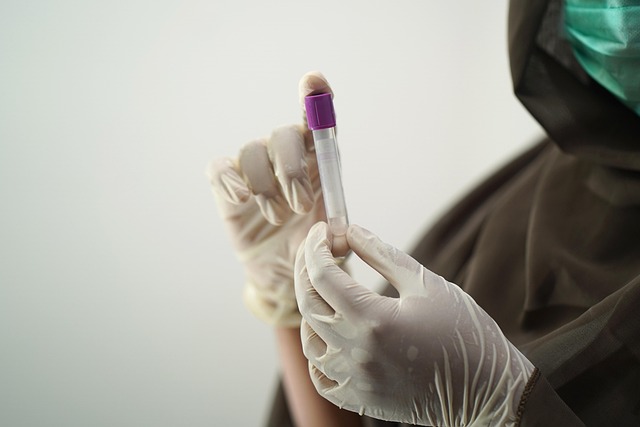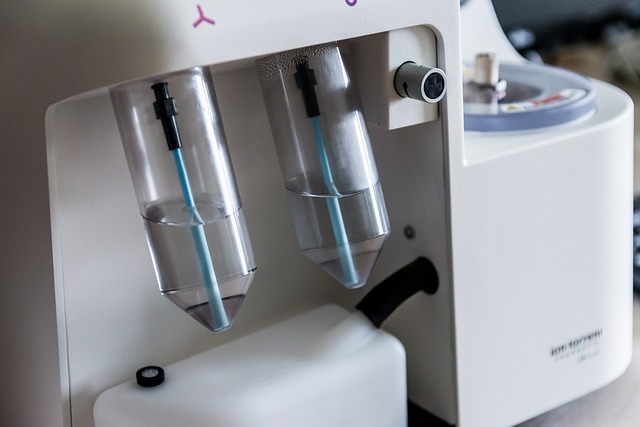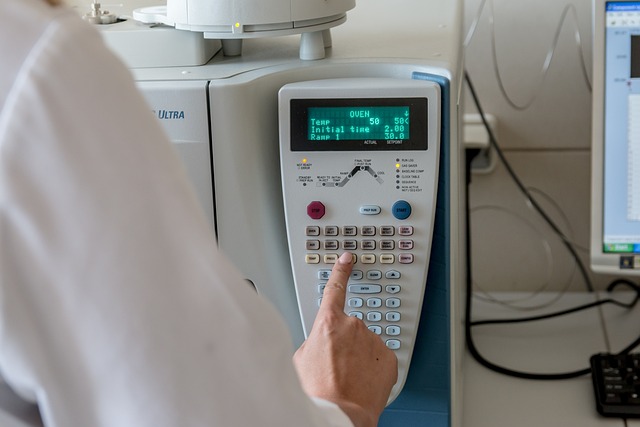Home thyroid blood tests are non-invasive ways to monitor metabolic health by measuring T3 and T4 hormone levels. Women over 40 are advised regular checks, but personal needs vary. Test preparation includes rest, fasting, and proper cleaning. Key symptoms include fatigue, weight changes, mood swings, and temperature sensitivity. Normal ranges for TSH, T3, and T4 indicate optimal thyroid function. Results can signal hyperthyroidism or hypothyroidism, requiring specialist consultation and treatment. Accurate interpretation demands understanding of normal/abnormal hormone levels and communication with a healthcare provider for follow-up and proactive measures.
Considering a home thyroid blood test? This comprehensive guide will walk you through what to expect. From understanding thyroid function tests and their importance, to preparing for your at-home test, we’ve got you covered. We’ll break down the science behind the test results, explain normal to abnormal ranges, and outline next steps based on your findings. Empower yourself with knowledge about managing your thyroid health through this easy and accessible testing method.
- Understanding Thyroid Function Tests
- Preparing for Your Home Test
- What Does the Blood Sample Tell?
- Interpreting Results: Normal to Abnormal
- Next Steps After Your Test Results
Understanding Thyroid Function Tests

Thyroid function tests are crucial for assessing how well your thyroid gland is performing. These tests measure the levels of thyroid hormones in your blood, providing valuable insights into your overall metabolic health. A home thyroid blood test has become increasingly popular as a convenient way to check these levels from the comfort of your own home. This testing method allows you to take control of your health and monitor any potential thyroid issues early on.
Understanding what these tests entail is essential, especially considering the thyroid screening recommendations for women. It’s generally advised that women over 40 undergo regular thyroid checks as part of their routine healthcare. However, it’s important to remember that individual needs may vary, and factors like family history or specific symptoms can influence how often you should get a thyroid check. While these tests are useful diagnostic tools, they cannot replace professional medical advice. Can I diagnose thyroid issues myself? Absolutely not; interpreting test results accurately requires the expertise of a healthcare provider who can provide personalized guidance based on your unique circumstances.
Preparing for Your Home Test

Preparing for your home thyroid blood test is relatively straightforward. Before taking the test, ensure you’ve been well-rested and haven’t eaten or drank anything (except water) for at least 8 hours. This is crucial as certain foods and beverages can interfere with the accuracy of the results. Some simple steps include cleaning and sterilizing the testing area to avoid contamination, reviewing the instructions provided with your test kit, and preparing any necessary supplies like a sharp needle and alcohol wipes.
Remember that signs you need a thyroid blood test can include fatigue, weight fluctuations, changes in mood, and increased sensitivity to cold or heat. If you’ve been experiencing these symptoms for an extended period, it might be worth considering a home thyroid blood test as part of your overall health assessment. What does a normal thyroid level look like? Typically, TSH (thyroid-stimulating hormone) levels should fall between 0.4 and 4.0 mIU/L, with T3 (triiodothyronine) and T4 (thyroxine) within the reference range specific to your lab or healthcare provider.
What Does the Blood Sample Tell?

A home thyroid blood test provides valuable insights into your thyroid function by examining a small sample of your blood. This test typically measures two key hormones: thyroxine (T4) and triiodothyronine (T3). The results of this analysis offer crucial information about your body’s metabolic rate and energy production.
High levels of T4 or T3 can indicate an overactive thyroid gland, a condition known as hyperthyroidism, which may manifest in symptoms such as rapid heartbeat, weight loss, and increased appetite. Conversely, low concentrations of these hormones could suggest an underactive thyroid, or hypothyroidism, leading to fatigue, weight gain, and dry skin. Understanding the results of your home thyroid blood test is essential, especially if you suspect what causes thyroid imbalances?. If symptoms like those mentioned persist, it may be time to consult a specialist for further evaluation and guidance regarding treatment options for thyroid issues.
Interpreting Results: Normal to Abnormal

Interpreting your home thyroid blood test results can seem daunting, but understanding what’s “normal” and what’s “abnormal” is crucial.
Thyroid function tests typically measure two key hormones: T3 (triiodothyronine) and T4 (thyroxine). A normal result usually falls within a specific range for both these hormones, indicated by your laboratory. If your levels fall below the lower limit of normal, it may suggest hypothyroidism—your thyroid isn’t producing enough hormones. Conversely, if they’re significantly higher than normal, it could signal hyperthyroidism, where your thyroid is overactive.
While a home thyroid test can provide valuable insights, remember that accuracy depends on proper fasting and following the preparation instructions. Fasting for at least 8 hours before the test, avoiding certain medications, and minimizing stress around the time of testing can all impact results. Discussing your results with a healthcare provider is essential to determine if further evaluation or treatment is needed based on factors beyond just the test numbers.
Next Steps After Your Test Results

After your home thyroid blood test results are in, it’s important to understand the next steps. If the test indicates any abnormalities, your healthcare provider will discuss potential causes and suggest appropriate treatments or further tests. They may recommend a follow-up thyroid blood draw after a certain period to monitor any changes in thyroid hormone levels.
In the meantime, you can take proactive measures based on what you’ve learned. For instance, if the test highlights hypothyroidism, ensuring a balanced diet rich in iodine and incorporating regular physical activity can be beneficial. Additionally, managing stress through techniques like meditation or yoga may help optimize thyroid health, as stress can influence hormone levels. Remember, open communication with your healthcare provider is key to maintaining optimal thyroid health.
A thyroid function test, especially when conducted with a home thyroid blood test kit, is a convenient and accessible way to monitor your thyroid health. By understanding the testing process, interpreting results, and knowing the next steps, you can take charge of your thyroid well-being. Remember that early detection is key, and regular checks, whether at home or through medical professionals, can help manage any potential issues effectively.
